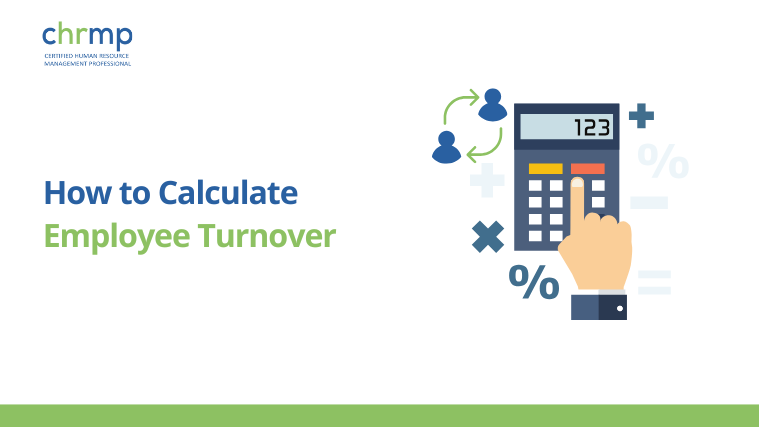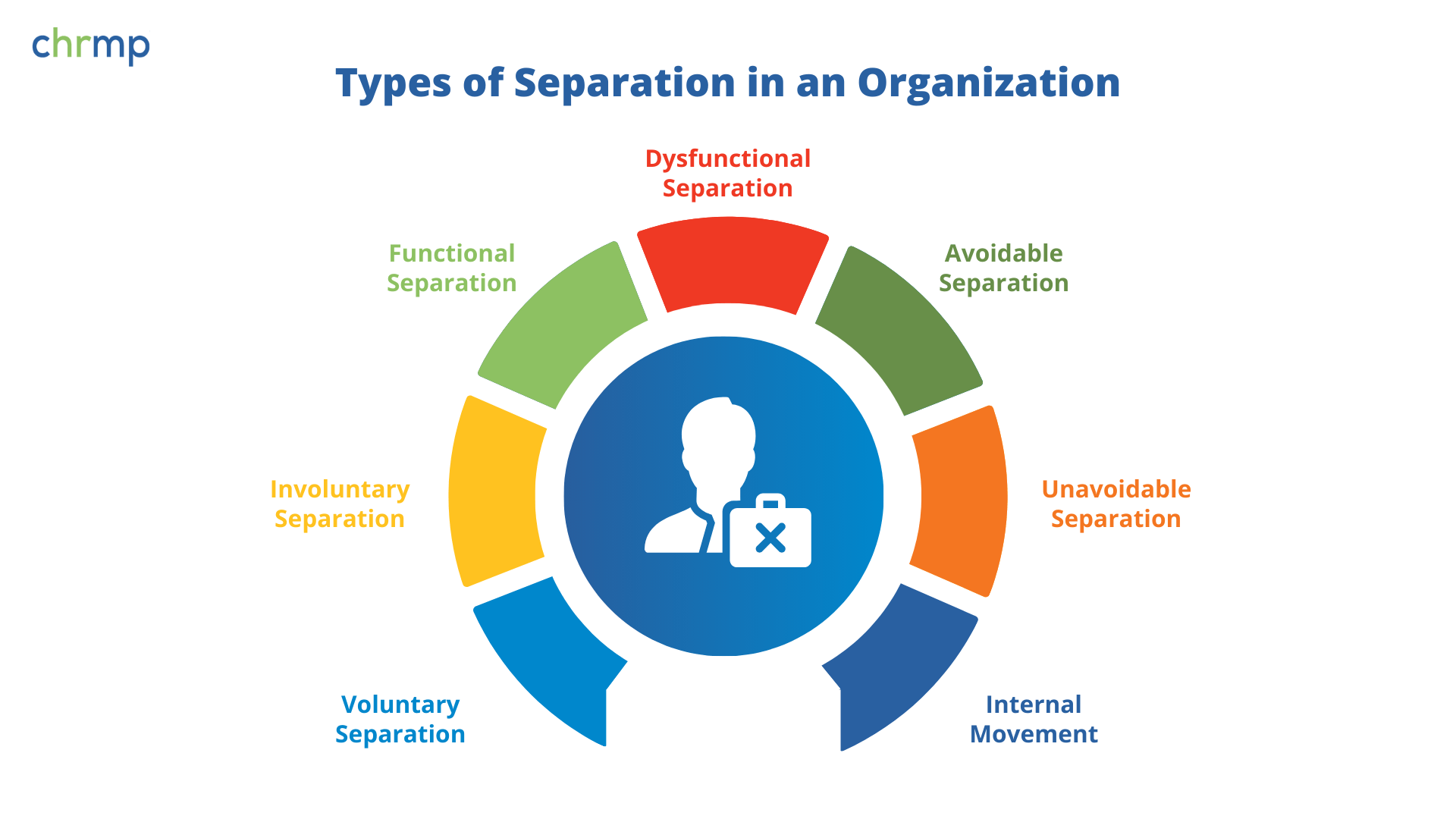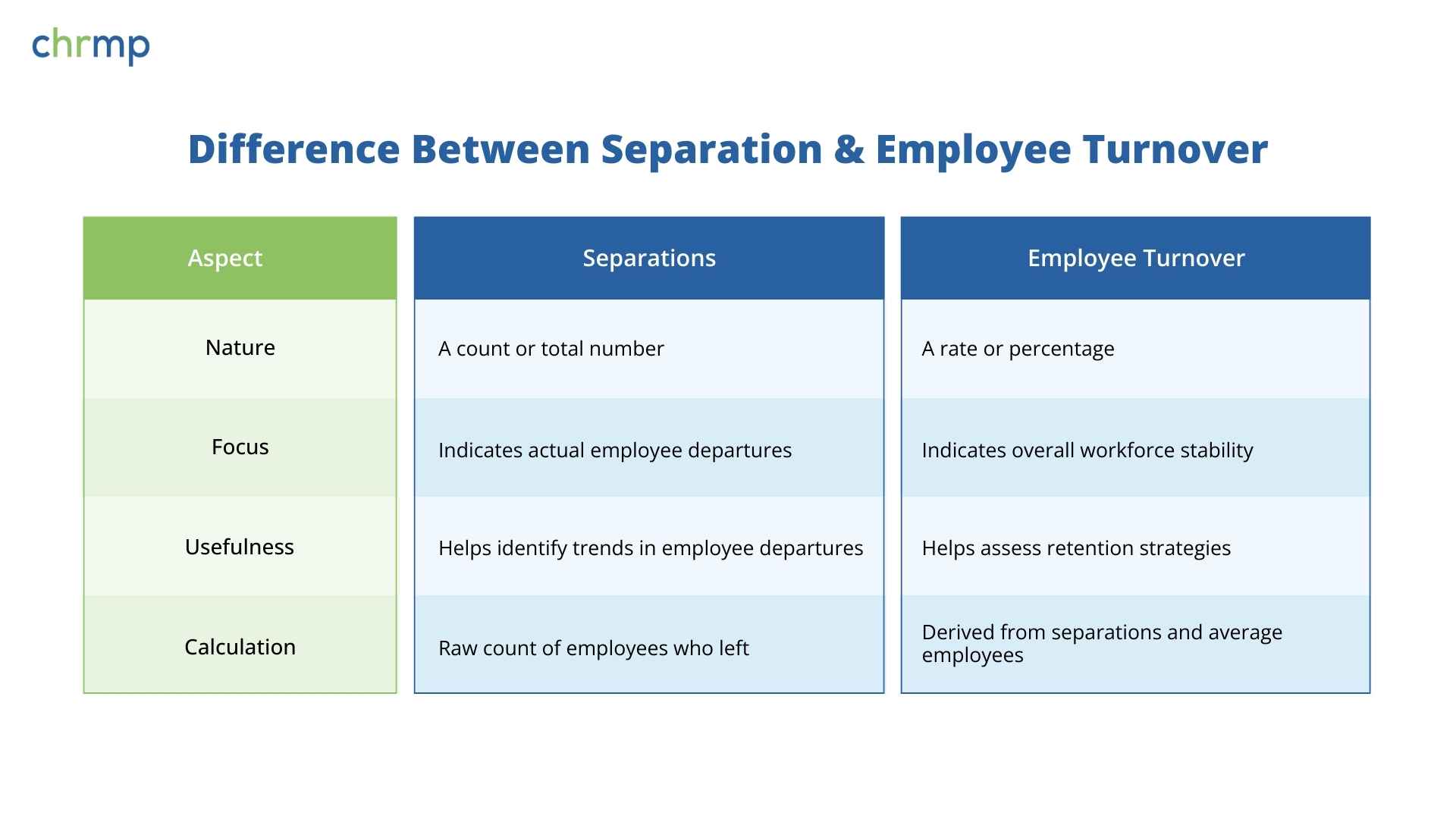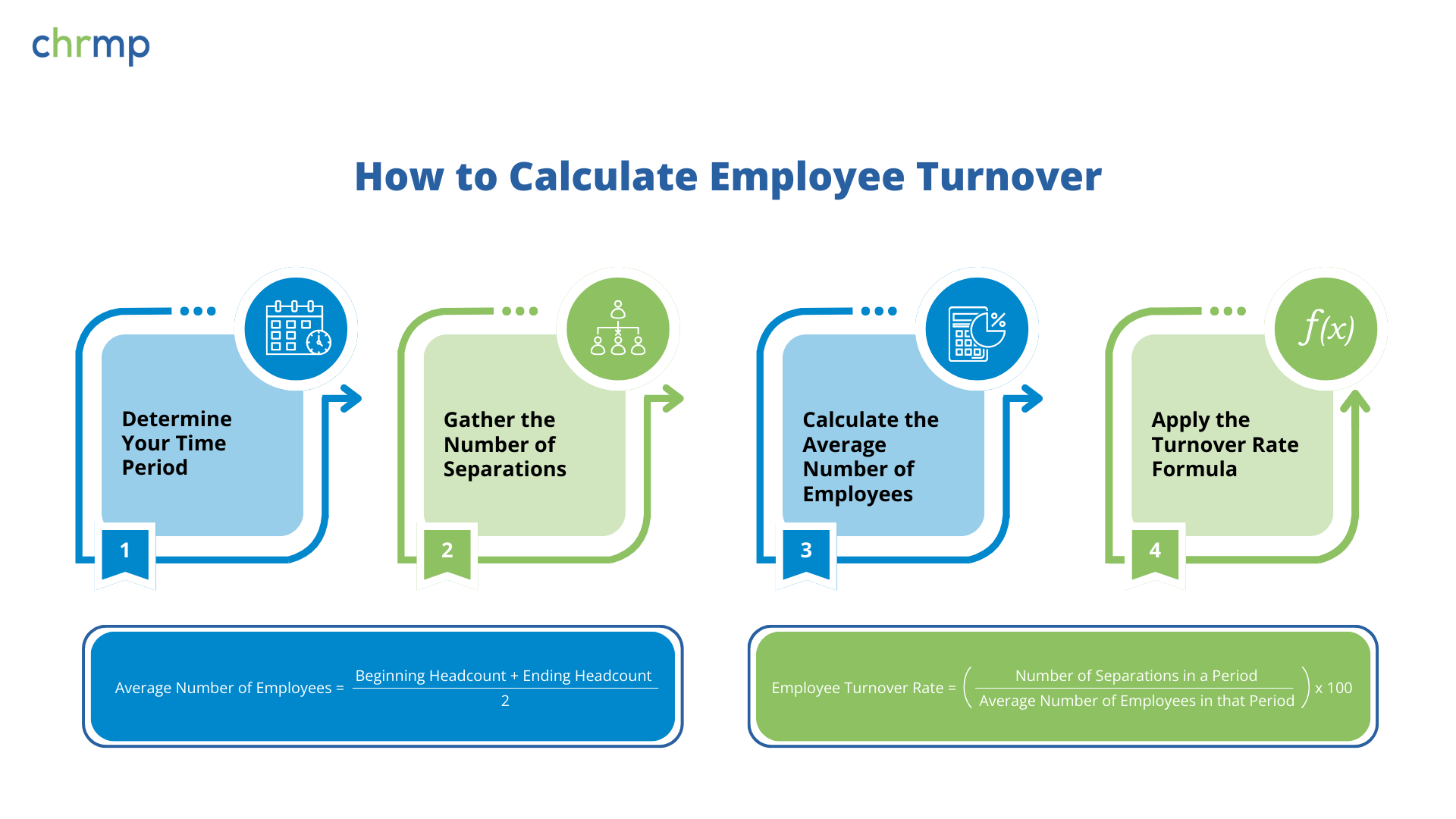

In this blog post, we’ll break down the essential concepts, share real-world examples, and provide step-by-step guidance on How to Calculate Employee Turnover. Let’s dive right in!
For many HR professionals, this challenge is all too familiar. Understanding how to calculate employee turnover can be the key to turning this situation around. By tracking turnover rates effectively, you can pinpoint which parts of your organization need the most attention, develop targeted retention strategies, and save your company from the high costs associated with frequent departures.
In HR terms, separation marks the official end of the employment relationship between an organization and an individual. It occurs when an employee is no longer on the company’s payroll—whether due to voluntary (e.g., resignation, retirement) or involuntary (e.g., termination, layoff) reasons. Sometimes separations are prompted by external circumstances, such as the employee’s death or disability, but the key point is that a separation concludes the contractual and working relationship with the organization.
Separation can be categorized into different types based on the reasons for departure. Understanding these categories can help HR professionals develop effective retention strategies.

To better analyze your employee turnover rate, it’s crucial to understand the various forms of separation in detail. Here are some examples:
Voluntary Separation
Occurs when employees choose to leave the company on their own. This can be due to various reasons, including career growth opportunities, dissatisfaction with management, or better compensation elsewhere.
For instance, a software developer resigns from a tech company to join a competitor that offers higher pay and better benefits. This type of separation is often linked to job dissatisfaction, lack of career growth, or external opportunities. Companies experiencing frequent voluntary separation should assess their compensation structure, work culture, and employee engagement strategies to address underlying issues.
Occurs when employees are let go due to performance issues, downsizing, or restructuring.
For instance, a company undergoing financial difficulties lays off 50 employees as part of cost-cutting measures. While this type of separation is sometimes necessary, organizations can support affected employees through severance packages, outplacement services, or internal transfers. In this case, HR should focus on communication strategies and support programs to help remaining employees cope with workplace changes.
This happens when underperforming employees leave, allowing the organization to bring in better talent.
For instance, a sales associate who consistently fails to meet targets is let go, and a new high-performing recruit takes their place, improving overall sales numbers. This separation can be beneficial as it enhances overall productivity.
This occurs when top-performing employees leave, negatively impacting business performance.
A highly skilled engineer resigning due to a lack of career development opportunities is an example, as it can cause project delays and knowledge loss within the team. Organizations should focus on employee engagement and career advancement programs to prevent this type of separation.
Avoidable turnover results from issues that could have been addressed by the organization, such as poor management, lack of career growth, or inadequate compensation.
If an employee resigns due to a toxic work environment, poor management, or low compensation, HR should assess internal policies and feedback mechanisms to identify and address the root causes of dissatisfaction. If HR had identified and resolved the issue earlier, they might have retained the employee.
Unavoidable turnover happens when an employee leaves due to reasons beyond the company’s control, such as retirement, personal relocation, or health concerns.
For instance, an employee may move to another city due to family commitments or retire. While this type of turnover cannot be prevented, companies can offer flexible work options, such as remote work, to retain talent where feasible. This type of turnover is difficult to prevent but can be managed by offering remote work options if feasible.
Describes situations where employees leave their current positions but remain within the organization—moving to another role or department. While this creates a vacancy in the original position, it can also be a positive signal of internal career growth and development opportunities.
Separation is essentially the event in which an employee leaves the organization—whether by resignation, termination, retirement, or other means. Each separation directly contributes to your organization’s overall employee turnover figure. In other words, employee turnover is the cumulative measure of all separations (both voluntary and involuntary) compared to the average size of the workforce in a given period.
Without separations, you wouldn’t have turnover in the first place. Tracking every separation—and understanding the reason behind it—helps HR teams pinpoint why employees leave and how to create strategies that improve retention and reduce turnover.
In summary, while “separations” provide the raw data on how many employees have left an organization, “employee turnover” translates that data into a percentage that reflects the overall stability and health of the workforce. Both metrics are essential for effective human resource management and strategy development.
Every separation is a direct contributor to your organization’s turnover rate. To be precise:
Hence, employee turnover is the cumulative effect of multiple separations, giving you a clearer view of how many people exit relative to your workforce size.

Put simply, employee turnover refers to the rate/percentage at which employees leave your organization over a certain period, typically measured monthly, quarterly, or annually. This includes both voluntary exits—such as resignations—and involuntary exits—such as layoffs or terminations. While some turnover is normal (e.g., retirement, promotions to external opportunities, etc.), high turnover can indicate issues with management practices, workplace culture, or compensation structures.
For example, a retail business may experience higher turnover due to seasonal hiring trends, whereas a financial services company may have lower turnover due to longer career development pathways and benefits.
By conducting a thorough employee attrition analysis, you gain valuable insights into the underlying reasons for departures and can create data-driven strategies to improve your employee retention rate.
Understanding turnover allows HR professionals to:
The most commonly used formula for Calculate Employee Turnover is:
Employee Turnover Rate=(Number of Separations in a Period/Average Number of Employees in that Period)×100
Key Components:
Let’s break it down into four clear steps:

Step 1: Determine Your Time Period
Firstly, decide if you want to measure employee turnover monthly, quarterly, or annually. Your choice should depend on your organizational goals, size, and how frequently you review HR metrics and analytics. For instance, if you have a high turnover industry (like retail), monthly or quarterly tracking might provide more immediate insights.
Step 2: Gather the Number of Separations
Identify all the separations (voluntary and involuntary) that occurred within your chosen time period. Make sure you:
Step 3: Calculate the Average Number of Employees
To get your average headcount:
Use this formula :Average Number of Employees= Beginning Headcount + Ending Headcount/2
For instance, if you had 100 employees at the start of the quarter and 120 by the end of the quarter, your average headcount is:
(100 + 120) / 2 = 110
Step 4: Apply the Turnover Rate Formula
Using the basic formula:
Employee Turnover Rate=(Number of Separations in a Period/Average Number of Employees in that Period)×100
Putting It All Together
Example of Calculating Employee Turnover
Let’s walk through an example that illustrates how to calculate employee turnover using these steps:
Scenario:
Step 1: You’ve chosen a quarterly period.
Step 2: You identify 10 employees left the organization in this quarter.
Step 3: Calculate the average number of employees:
200+220/2=210
Step 4: Plug into the employee turnover rate calculation:
Employee Turnover Rate=(10/210)×100≈4.76%
So, your quarterly turnover rate is about 4.76%. To keep track of this data more seamlessly, you might use Turnover Rate Formula Excel spreadsheets or an Excel HR Dashboard. This helps you consolidate your turnover rate reporting and simplify your HR metrics and analytics.
By regularly reviewing your employee turnover rate, you can zero in on problem areas. For instance, if the marketing department consistently shows a higher turnover rate, you can investigate deeper:
Turnover is expensive. Costs include advertising the job, training, onboarding, possible severance packages, and the lost productivity while the position remains unfilled. By performing employee attrition analysis, HR can estimate these costs and make a strong business case for investing in better employee development and retention programs.
![]()
Tracking turnover effectively helps HR teams build strategies to retain top talent. Here are some pro tips:
Inaccurate or incomplete data skews your turnover rate. Make sure you:
Combining voluntary and involuntary separations into a single metric can muddy the water. By tracking them separately, you gain deeper insights:
Conclusion
Calculating employee turnover isn’t just about plugging numbers into a formula; it’s about proactively shaping the kind of workplace your organization wants to be. When used correctly, the employee turnover rate calculation can uncover critical issues that affect morale, productivity, and profitability. By monitoring your HR metrics and analytics regularly—through methods like employee attrition analysis, turnover rate reporting, and an Excel HR Dashboard—you gain the insights needed to enact meaningful change and strengthen your employee retention rate.
Ready to take your turnover tracking to the next level? Start integrating these tips into your regular HR reporting cycle, and watch how clear data visualizations and well-calculated metrics empower your team to drive better decision-making. Take action now: Implement a consistent turnover tracking process, involve stakeholders in the analysis, and craft tailored retention strategies that make a lasting impact on your workforce.
1. What is employee turnover, and why is it important to calculate it?
Employee turnover is the rate at which employees leave your organization over a specific time period. It’s important to calculate because it provides insights into the health of your workforce, highlights problem areas, and helps you understand the financial impact of replacing staff.
2. What formula is used to calculate employee turnover rate?
A common formula for how to calculate employee turnover is:
(Number of Separations in a Period/Average Number of Employees in that Period)×100
This formula helps you determine what percentage of your workforce left during a certain time period.
3. What data do I need to calculate employee turnover rate?
You need:
4. How do I calculate the average number of employees for the turnover formula?
Add the total number of employees at the beginning of the period to the total number of employees at the end of the period, then divide by two. This gives you the average headcount.
5. How can I visualize employee turnover data?
You can create an Excel HR Dashboard or use HR analytics tools to build charts and graphs. Visual formats—like line graphs showing turnover trends over time—make it easier to spot patterns and present turnover rate reporting to leadership.
6. What is the difference between voluntary and involuntary turnover?
Tracking both types separately provides deeper insights for employee attrition analysis.
7. How can I analyze turnover trends over time?
By consistently tracking turnover (monthly, quarterly, or annually) and using tools like an Excel HR Dashboard, you can compare data across different periods. Look for spikes or drops in turnover and investigate potential causes (such as organizational changes or industry trends).
8. How can I use turnover data for workforce planning and decision-making?
HR metrics and analytics guide effective workforce planning. By reviewing turnover data, you can:

© 2007-2025 CHRMP| All Rights Reserved | Powered by Ripples Learning & Research Private Limited
